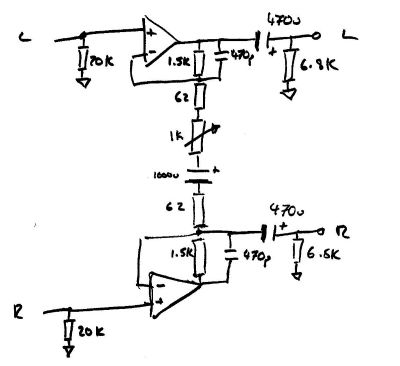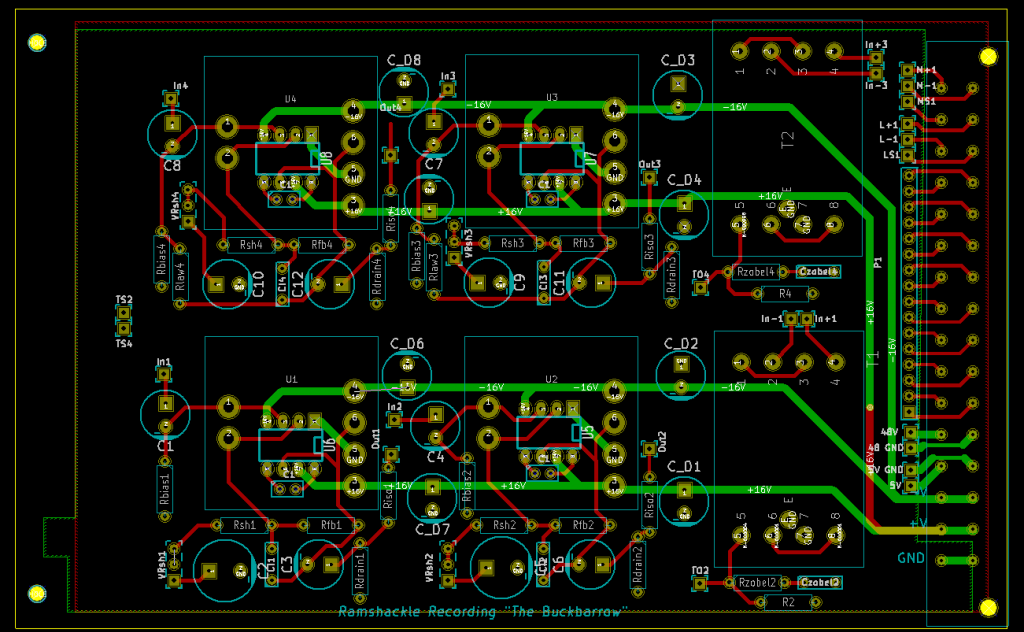ramshackles
Well-known member
Hi
I've been working on this idea for a couple of months now.
Heavily inspired by Ian's Eurocard work, and especially the TwinLineAmp, I've set out to make what is essentially the discrete (or IC) version of the same thing. I'm currently calling it...:
QuadLineAmp
Basically, it is 4 amplifiers and 2 transformers on a PCB.
Each amplifier has some associated circuitry, and each amplifier is 'unconnected'.
The idea is, that by connection things up in the right way and varying which components are populated (and their values), you can build a number of things.
I've laid out designs for:
- 2 channel microphone preamp
- Stereo summing amplifiers
- mono summing amps
- a 'Line mixer' with input gain, post fade amp and an active pan pot...this is pretty rough at the moment
- 2 mixer channels with input gain, post fade amp and a pan pot using Ian's smart pan pcb....even more rough..
I *think* I have laid out a PCB so that all of this stuff can be made, either using discrete opamps or 5534 opamps.
Like Ian's designs, the idea here is that all the controls are mounted off-board, making it very configurable.
Here is a schematic of a single amp stage, as it is on the PCB:
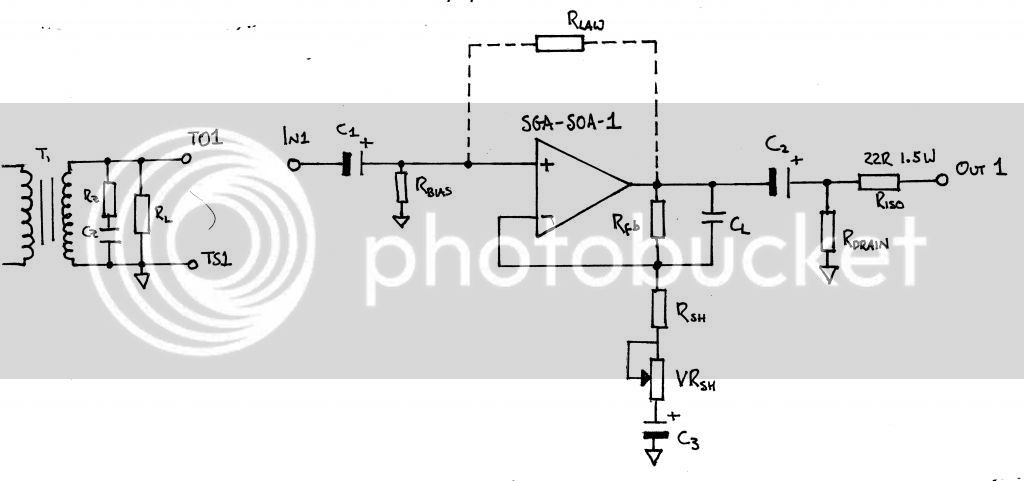
Here is a schematic for a single channel of the mic preamp, with values chosen for NE5534 opamps (to make this nasty pic a bit clearer I omitted the compensation cap, decoupling caps,zobel network and power supply):
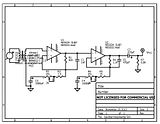
Here is a pic of the PCB layout so far:
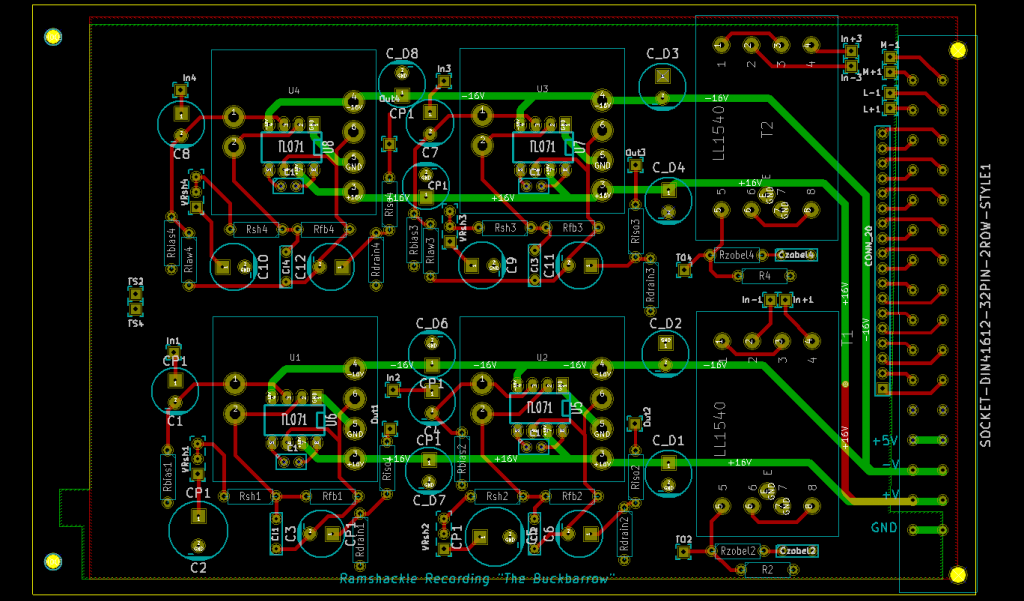
The transformer footprints are LL1528 (for mic input) or LL1527 (for line input). Finally there is a 32 pin DIN connector which will plug into a custom back plane
The backplane will have buses for +/- V, ground and +5V (or whatever for leds/relays/what you like). There are also 2 connections for balanced inputs 2 for unbalanced outputs and then the remainder are given over to buses.
So you could potentially make a mixer (you might need a few little pcb's to host all the controls for aux/group switching). With the active panpots you could probably drive a fair number of groups and then use the same PCB for the summing
I've been working on this idea for a couple of months now.
Heavily inspired by Ian's Eurocard work, and especially the TwinLineAmp, I've set out to make what is essentially the discrete (or IC) version of the same thing. I'm currently calling it...:
QuadLineAmp
Basically, it is 4 amplifiers and 2 transformers on a PCB.
Each amplifier has some associated circuitry, and each amplifier is 'unconnected'.
The idea is, that by connection things up in the right way and varying which components are populated (and their values), you can build a number of things.
I've laid out designs for:
- 2 channel microphone preamp
- Stereo summing amplifiers
- mono summing amps
- a 'Line mixer' with input gain, post fade amp and an active pan pot...this is pretty rough at the moment
- 2 mixer channels with input gain, post fade amp and a pan pot using Ian's smart pan pcb....even more rough..
I *think* I have laid out a PCB so that all of this stuff can be made, either using discrete opamps or 5534 opamps.
Like Ian's designs, the idea here is that all the controls are mounted off-board, making it very configurable.
Here is a schematic of a single amp stage, as it is on the PCB:

Here is a schematic for a single channel of the mic preamp, with values chosen for NE5534 opamps (to make this nasty pic a bit clearer I omitted the compensation cap, decoupling caps,zobel network and power supply):

Here is a pic of the PCB layout so far:

The transformer footprints are LL1528 (for mic input) or LL1527 (for line input). Finally there is a 32 pin DIN connector which will plug into a custom back plane
The backplane will have buses for +/- V, ground and +5V (or whatever for leds/relays/what you like). There are also 2 connections for balanced inputs 2 for unbalanced outputs and then the remainder are given over to buses.
So you could potentially make a mixer (you might need a few little pcb's to host all the controls for aux/group switching). With the active panpots you could probably drive a fair number of groups and then use the same PCB for the summing



